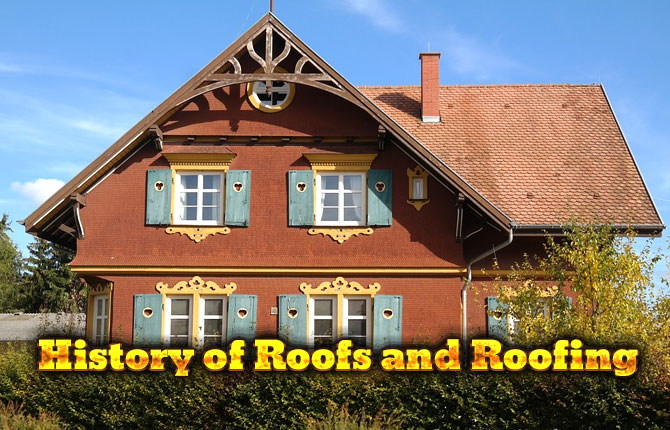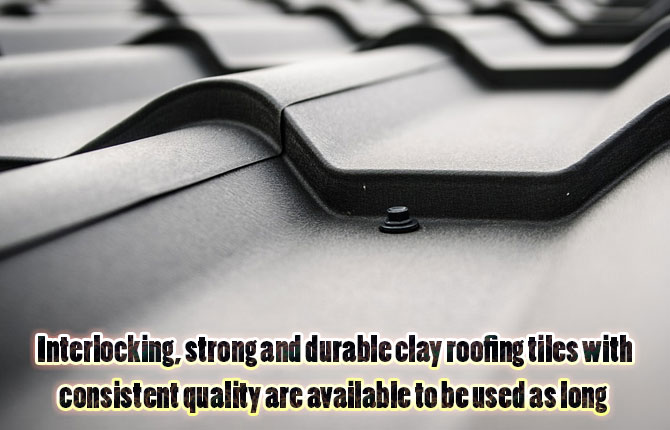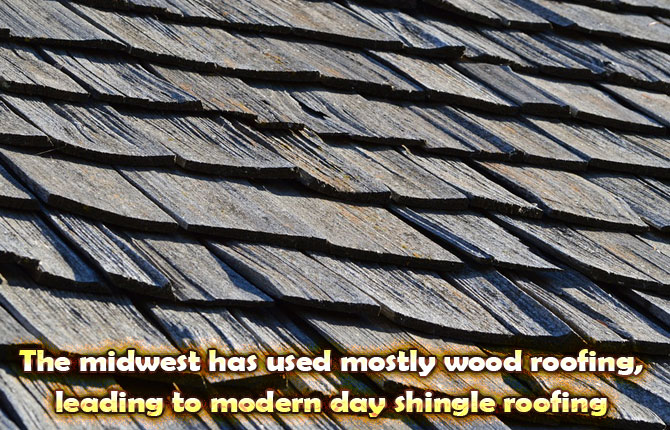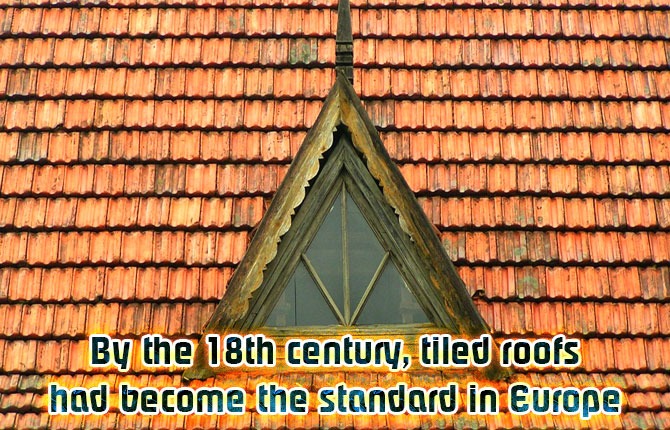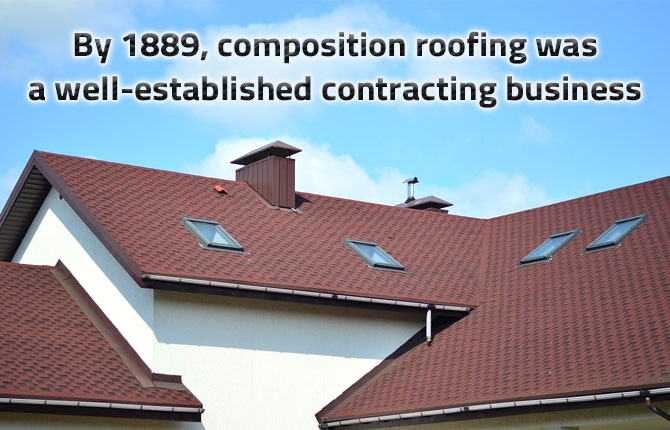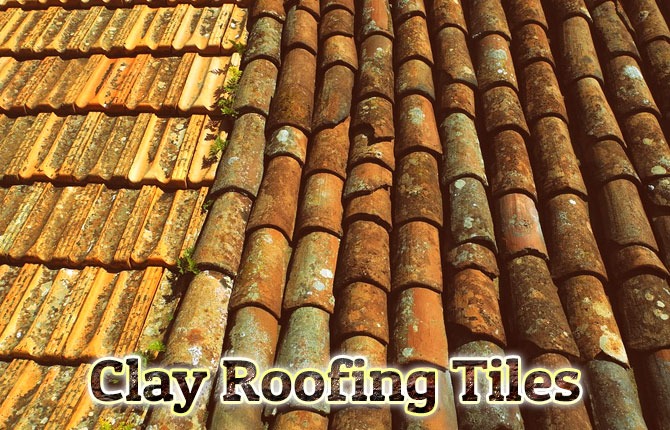To have a roof over our heads means to have shelter, a home, and a general feeling of security. Roofs have been essential structures in human history, whether they’re the natural stone of caves, a flimsy tent, or the tile of modern homes. When we don’t have a roof, we’re exposed to all kinds of threats and risks.
Roofing came from an instinct need of protecting oneself from the weather and other elements. Throughout the history of mankind, roofing has evolved and developed, from the use of twigs and straws to metals and tiles. Let’s take a look at this journey in order to better understand this concept throughout the ages:
Interlocking Techniques
The use of clay roofing tiles first began in China as early as 10,000 BC. Many of us might be familiar with roofs made of interlocking tiles made of that cooling material. These are a sturdy, strong, and durable option that gives us consistent quality throughout.
These techniques came about as newer types of clay roofing tiles were developed and introduced. It was a significant step forward to the designs of the roofs that we know today.
Some of the popular roofing styles today include a pyramid roof and a butterfly roof consisting of an inverted gable like “lifted wings.” Also, a gambrel roof consists of wooden shingles that give a traditional feel. For houses with one wall higher than the other, shed roofs are usually recommended.
Various Roofing Materials
From the 19th century up to the present day, we have seen various roofing materials that are favored by certain regions in the US. While the Midwest has always preferred wood, the Southwest otherwise has used mostly tiles. The use of metal and tile is much more common in the southern US. If you intend to resell your property, a new roof can help boost its curb appeal enough to enhance its market value.
Homes in the Midwest region have typically made use of wooden roofing. This has led to the modern shingles of today.
Roofing contractors, such as RoofPRO and similar companies know the best roofing materials that modern and old homes need nowadays.
Modern roofing materials include metal roofs, which are durable and long-lasting. Aluminum roof can last 50 years or more with proper maintenance. Metal roofs can reflect solar radiant heat during the long summer days.
Green roofs have also emerged. A green roof has a layer of vegetation or plants over a waterproofing system installed on a slightly sloped or top of a flat roof. In addition, high-efficiency solar shingles are also now available. These are more cost-effective in the long run than traditional solar systems.
Rome: The City of Tiled Roofs
It was the Romans who introduced to the “red-tiled roofs” in Middle Europe. They soon became popular due to their durability. The beautiful classic look also didn’t hurt! Many of the ancient buildings in Rome (and elsewhere in Italy) with red tile roofs are still strong today. This is a testimony to just how durable this option is.
Roof Machinery
In the early 1960s, the mining of raw clay was given over almost wholly to specific machinery processes. This was largely due to the increase in demand for clay roofing tiles. Clay was not just easy to get, but it was also a durable option and had a cooling effect on homes.
Spanish Roof Styles
Different areas have different roofing, both in terms of the material and style. While the ceramic roof style might have originated from Spain, it is now popular in the US (especially in the south/southwestern regions). The one-barrel design creates attractive patterns of “ripples” across the roof.
Ceramic has also been found to be a very sturdy housing material in general. This is another factor in its favor when we consider it for a roof.
The Tiled Roof Standard
By the 18th century, tiled roofs had become the standard in Europe. This was due to several factors, but to the plentiful supply of raw materials was probably one of the main reasons.
Way back then, roof-making was considered a craft. Still, it was a laborious process to make the tiles and fit them on tops of a whole house. Roofing required thorough experience in the process of roof-making, as well as an expansive knowledge of the suitable roofing materials.
Even now, it’s not recommended that you take on a roofing project without the relevant experience e and knowledge. A roof problem can bring down the living experience in the whole house, so it’s better to leave such projects to the professionals rather than undertake a DIY task in this area.
Wood Shingle Roofs
We’ve mentioned shingled roofs above, so let’s take a slightly closer look at this once-popular roofing option. Wood shingles were popular until 1911 when the National Board of Fire Underwriters appealed to eliminate them. This was probably due to the fact that they were a fire hazard, pitting the rest of the house and its occupants at risk.
Asphalt shingles, which were made to imitate wood shingles, were also introduced around that time. As these were fire-resistant, they were favored over wood shingles.
However, it’s an interesting fact that wood shingles never really died out as a roofing material. Despite their later introduction and public favor towards other roof tiles like slate, metal, and clay tiles, wood shingles were never ditched.
While the other options might be more resistant to fire, wooden options might still be preferred by some due to their appearance and relatively light weight. Even 20th-century architectural styles, such as the Colonial Revival, still used wood shingles.
The Woolly Mammoth Roof
You might not think that the wool of a mammoth would have anything to do with roofs, but it was actually used as a roof itself.
The earliest recorded roofing was the woolly skin of a mammoth, which was found in Siberia way back 40,000 years ago (before Christ). This usage was probably due to the thick and warm effect of the skin.
Introduction of Glass Fiber
As technology advanced, so did the development of other roofing materials. In the 1970s, a felt that was infused with glass fiber was introduced as a roofing material.
The glass fiber-based felt added a much more tensile strength, which meant it could be drawn out and stretched without breaking. It was also thinner and much more lightweight. When compared with tiles or shingles, which had to be fitted together, this was a much easier way to go.
Composition Roofing
The first composite roofing was used in New England in the 1840s. These roofs were made of woven fabric covered with some thick substance such as pine, tar, and sand. Later years saw several improvements such as infusing fabric with asphalt and a combination of other materials like sand, talc, or powdered limestone.
By 1889, composition roofing was part of the well-established contracting business. After 1900, anyone could purchase this roofing, which is layered with granulated stone, from suppliers such as Sears, Roebuck, etc.
However, its commonality and basic appearance mean that most people might not prefer it when designing their houses. Hence, the all-too-common roll roofing is usually seen in garages, barns and other industrial structures. If you want to know about the origins of garages and how they became a staple for many houses around the world, check out The History of Garages.
Clay Tile History of Europe
As mentioned above, Europe has quite a long history with clay roof tiles. You can see the evidence of this in many European cities, most of which feature old homes with clay roof tiles still intact.
In the present day, the durability of building materials has become more important to the homeowner. This is especially true for those who can recognize and appreciate the high quality and sturdiness of clay-based roofing.
Hence, European-style roofs are still seen even in newly built houses or modern architectures. Homeowners want to implement the durability and excellent quality of clay tiles when renovating houses or completely replacing old and worn-out roofs. Many people consider investing in this type of roofing system because of the fireproofing option too. Apart from durability, who would refuse safety?
Clay Tiles as Fireproof Options
Besides the classic appearance and durability of clay tiles, their fireproof feature is also a reason for their popularity in Europe and other places.
This characteristic of clay roof tiles as being highly resistant to fire was finally recognized in 1212 when King John of England issued building codes for London. Among other regulations, the codes were focused on eliminating the use of roofing materials that could easily catch fire. Since clay tiles were found to be fireproof, they managed to stay on.
Finding Out More
If the above discussion was of interest, you might find the book called “Basic Roof Construction” even more useful. Check it out here:
This book was authored by a freelance architect, who focuses mostly on the construction of houses. In this work, she’s combined her experience in prominent architectural companies and her research and university in order to give us an overview of roofing techniques. With this in hand, we’d know which kind of roofing is best for our house, or what kind we should look out for when buying a home.
Conclusion
Roofing is an important concept in modern times and has been so for most of human history. Once we find out the best roofing materials for our location and the best roofing contractor such as AJ Reliable, we’d be much more likely to lead a comfortable life inside our house. Plus, the style, design, and color of our roofing could transform the whole look of the building. We should take care while making a decision in this area, so learning about the history of roofs could certainly come in handy!

